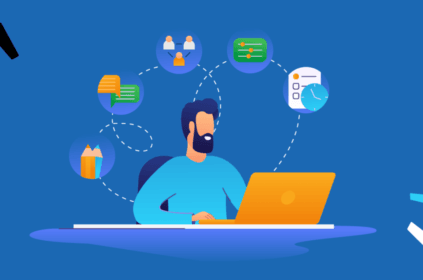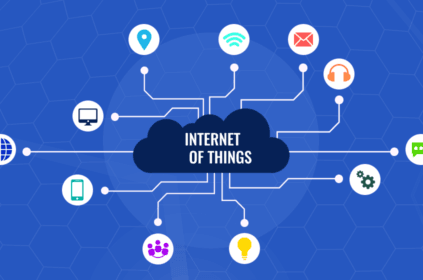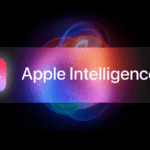The dawn of 5G technology marks a pivotal moment in the evolution of the Internet of Things (IoT). This next-generation wireless network promises to revolutionize connectivity, ushering in a new era of faster, more reliable communication between devices. With data transfer speeds reaching unprecedented levels and latency dropping to mere milliseconds, 5G is set to unlock a plethora of new applications and use cases across various industries. In this blog, we will delve into the profound impact of 5G on IoT development, exploring its benefits, potential challenges, and what you need to know to navigate this transformative landscape.
Enhanced Performance and Capabilities
Speed and Latency Improvements
One of the most significant advantages of 5G technology is its ability to deliver data transfer speeds that can be up to ten times faster than current LTE networks. With theoretical peak speeds reaching up to 20 Gbps, 5G facilitates rapid data transmission, enabling devices to communicate in real time. This is particularly crucial for applications requiring instantaneous feedback, such as remote surgery, autonomous vehicles, and smart city infrastructure.
In the context of remote surgeries, for instance, the low latency of 5G—potentially as low as 1 millisecond—ensures that surgeons can control robotic instruments with precision, making real-time adjustments as needed. Autonomous vehicles, which rely on timely data exchange for navigation and obstacle avoidance, will also benefit immensely from this rapid communication, enhancing both safety and efficiency on the roads.
Increased Device Capacity
Another standout feature of 5G is its remarkable ability to support an exponentially higher number of connected devices per square kilometer—up to one million devices compared to the mere 100,000 supported by 4G networks. This increased capacity is essential for densely populated urban areas, where a multitude of IoT devices operate simultaneously.
For example, in smart cities, a network of interconnected sensors can monitor traffic flow, detect parking availability, and manage energy consumption—all in real time. This capability enables cities to optimize traffic management systems, enhance public safety, and improve overall efficiency in resource utilization. Furthermore, the integration of IoT devices with 5G connectivity paves the way for smart grids that can balance energy supply and demand more effectively, contributing to a more sustainable urban ecosystem.
New Use Cases and Applications
Smart Cities and Infrastructure
The implementation of 5G technology is poised to transform urban environments through the extensive deployment of IoT sensors. Smart cities equipped with these sensors can monitor and manage various infrastructures, including utilities, transportation systems, and public safety services.
For instance, IoT-enabled smart buildings can continuously assess their structural integrity, detecting issues such as wear and tear or potential safety hazards. This proactive approach allows for timely maintenance and reduces the risk of catastrophic failures. Moreover, with real-time data analysis from connected sensors, cities can optimize energy usage, resulting in significant cost savings and a reduced carbon footprint.
Additionally, smart traffic management systems can utilize 5G connectivity to analyze data from thousands of sensors, adjusting traffic lights in real time to alleviate congestion and improve air quality. By integrating AI and machine learning with 5G, cities can harness predictive analytics to foresee traffic patterns and implement efficient solutions ahead of time.

Healthcare Innovations
The healthcare sector stands to gain immensely from the implementation of 5G technology. Advanced telehealth solutions, powered by low-latency 5G networks, allow for remote patient monitoring and even remote surgeries. Patients in rural or underserved areas can access healthcare services without the need for extensive travel, making quality care more accessible.
For example, wearable IoT devices can continuously monitor patients’ vital signs, transmitting critical health data in real-time to healthcare providers. This immediate access to patient data enables timely interventions and personalized treatment plans, ultimately improving patient outcomes.
In emergency situations, 5G’s rapid communication capabilities ensure that medical teams can receive real-time updates about a patient’s condition while en route to the hospital. This information can be crucial in preparing the medical team for immediate action upon the patient’s arrival, potentially saving lives.

Agricultural Efficiency
The agricultural industry is also poised for a significant transformation through the adoption of 5G-enabled IoT devices. Precision agriculture utilizes real-time data to monitor crops and livestock, optimizing resource use and improving overall yield.
Farmers can deploy sensors that monitor soil moisture levels, weather conditions, and crop health, allowing them to make data-driven decisions regarding irrigation, fertilization, and pest control. This not only conserves resources but also maximizes productivity. For example, farmers can automate irrigation systems to only water crops when necessary, reducing water waste and promoting sustainable practices.
Furthermore, drones equipped with IoT sensors can provide aerial views of farmland, enabling farmers to identify areas requiring attention and monitor crop growth over time. With 5G connectivity, these drones can transmit high-resolution images and data in real time, allowing for prompt responses to any emerging issues.

Challenges and Considerations
Despite its immense potential, the integration of 5G into IoT ecosystems does not come without challenges. Manufacturers must invest in developing 5G-compatible devices, ensuring they can handle the new network’s capabilities while maintaining security against potential vulnerabilities. The increased number of connected devices presents a broader attack surface for cybercriminals, making robust security measures imperative.
As the adoption of 5G and IoT grows, it’s crucial to address security challenges associated with connected devices. For insights into common vulnerabilities, check out the OWASP IoT Top Ten.
Infrastructure Development
Moreover, the transition to 5G requires substantial infrastructure development. The deployment of 5G networks involves the installation of numerous small cell towers and base stations, which can be logistically challenging, especially in urban areas where space is limited. Ensuring seamless coverage and connectivity across various environments is crucial for realizing the full benefits of 5G in IoT applications.
Quality assurance testing is another critical aspect of this transition. IoT devices must be rigorously tested to ensure they perform reliably under varied conditions, including different environmental factors and network loads. This preparation is vital for instilling confidence in consumers and businesses alike that their 5G-connected devices will operate effectively in real-world scenarios.
Regulatory Considerations
Regulatory considerations also play a significant role in the adoption of 5G technology. Governments and regulatory bodies must establish guidelines and standards for the deployment of 5G networks, particularly concerning spectrum allocation and safety. Collaboration between stakeholders, including telecommunications companies, device manufacturers, and policymakers, will be essential in addressing these challenges.
The Future of 5G and IoT
As we look ahead, the potential applications of 5G technology within the IoT landscape are virtually limitless. With its ability to enhance connectivity, speed, and device capacity, 5G will catalyze innovation across various sectors, from transportation and healthcare to agriculture and beyond.
The convergence of 5G and IoT will foster the development of smart ecosystems that enhance quality of life, promote sustainability, and drive economic growth. As businesses and consumers alike begin to embrace the capabilities of 5G, the demand for innovative IoT solutions will continue to rise.
To fully leverage the benefits of 5G, organizations must remain proactive in their approach to development and deployment. This includes investing in R&D for 5G-compatible devices, prioritizing cybersecurity measures, and collaborating with partners across the value chain to ensure a seamless transition to this next-generation technology.
The Promise of 6G
While 5G is still being rolled out and adopted globally, researchers and technologists are already looking toward the future with 6G. Expected to launch around 2030, 6G aims to further enhance connectivity with even higher speeds—potentially up to 100 times faster than 5G—and drastically reduced latency, enabling near-instantaneous data transmission. This next-generation technology is anticipated to support a massive number of connected devices, paving the way for advanced applications like holographic communications, immersive augmented and virtual reality experiences, and even more sophisticated IoT ecosystems.
As industries continue to integrate 5G into their operations, the groundwork for 6G will likely focus on developing robust infrastructure, advanced AI integration, and enhanced security measures to address the complexities of an increasingly connected world. The evolution from 5G to 6G represents a significant leap in our ability to communicate and interact with technology, promising to further redefine the landscape of IoT and beyond.

Conclusion
The impact of 5G on IoT development is profound and far-reaching. As we transition into this new era of connectivity, organizations must prepare to navigate the challenges and opportunities that lie ahead. By embracing the capabilities of 5G, businesses can unlock new possibilities, driving innovation and enhancing the way we live and work. The enhanced speeds, lower latency, and increased device capacity offered by 5G will empower a range of applications, from smart cities to healthcare innovations, making our environments more efficient and responsive.
Looking even further ahead, researchers and technologists are already exploring the promise of 6G, which is expected to launch around 2030. With potential speeds up to 100 times faster than 5G and drastically reduced latency, 6G aims to support a massive number of connected devices. This advancement will enable applications like holographic communications and immersive augmented and virtual reality experiences, further redefining IoT ecosystems. As industries integrate 5G into their operations, the groundwork for 6G will focus on robust infrastructure, advanced AI integration, and enhanced security measures. Staying informed about these emerging trends and technologies will be crucial as we continue to explore the intersection of 5G and IoT, where the potential for transformative change is limitless.
As we look toward future advancements like 6G, securing cloud infrastructure will be key for businesses harnessing next-gen connectivity. For a deeper look into protective measures, visit our page on Securing the Cloud: Advanced Strategies for Privacy and Protection and stay ahead in safeguarding your cloud-based assets.
MyceliumWeb is a digital solutions provider specializing in web development, cloud services, and cybersecurity. We empower small businesses by enhancing operational efficiency and security through innovative technology.
We help clients navigate the digital landscape, ensuring a robust online presence. From user-friendly websites to advanced cloud infrastructures, MyceliumWeb drives transformation and growth.



















